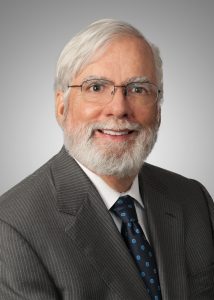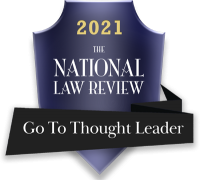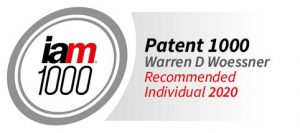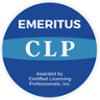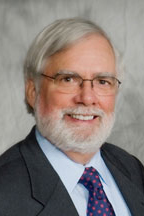In recent posts, I have worried, then warned, the Fed. Cir. holding that the Myriad “analyzing” or “comparing” diagnostic claims were invalid as abstract ideas, would cloud the IP future of “modern” claims to personalized medicine (see posts of July 29 and 31, 2011 and Oct. 29, 2010). To refresh our collective memories, here is a shortened version of one of the Myriad method claims:
1. A method for screening a tumor sample from a human subject for a somatic alteration in a BRCA1 gene in said tumor which comprises comparing a first sequence…[of] a BRCA1 gene from said tumor sample…with a second sequence …[of] a BRCA1 gene from a nontumor sample of said subject, wherein a difference in the sequence of the BRCA1 gene…indicates a somatic alteration in the BRCA1 gene in said tumor sample.
The Fed. Cir. recently encountered an internet commerce version of this claim in Cybersource Corp. v. Retail Decisions, Inc., App. No. 2009-1358 (Fed. Cir. August 16, 2011) (copy available at the end of this post) and invalidated both the method claim and the “Beauregard claim” that was directed to a computer readable medium containing program instructions to carry out the method. The method was directed to detecting fraudulent credit card purchases made using the internet to, e.g., detect that multiple card numbers had been used to make purchases from a single internet address. Claim 3 of U.S. Pat. No. 6,029,154 reads as follows:
3. A method for verifying the validity of a credit card transaction over the Internet comprising the steps of:
a) obtaining information about other transactions that have utilized an Internet address that is identified with the [ ] credit card transaction;
b) constructing a map of credit card numbers based upon the other transactions and;
c) utilizing the map of credit card numbers to determine if the credit card transaction is valid.
Claim 2 reads:
2. A computer readable medium containing program instructions for detecting fraud in a credit card transaction between a consumer and a merchant over the Internet, wherein execution of the program instructions by one or more processors of a computer system causes the one or more processors to carry out the steps of [a-c of claim 3].
The Fed. Cir. held that claim 3 failed the M or T test and that using the Internet is no more than a mere data-gathering step, citing In re Grams. The Fed. Cir. went on to find that claim 3 is “drawn to an unpatentable mental process –a subcategory of unpatentable abstract ideas.” The court gave weight to the fact that claim 3 “does not limit its scope to any particular fraud detection algorithm, and no algorithm’s are disclosed [in the spec.].
But would that have saved the claim, in view of Parker v. Flook, 437 U.S. 584 (1978), necessarily endorsed by the court, in which the Supreme Court “noted that the calculations [required to calculate and adjust alarm limits), while ‘primarily useful for computerized applications]’, could still ‘be made [using a] pencil and paper.'” Id. at 590, Slip. op. at 11. The Fed. Cir. concluded: “Such a method that can be performed by human thought alone is merely an abstract idea and is not patent eligible under s. 101….computational methods that can be performed entirely in the human mind are the types of methods that embody the ‘basic tools of scientific and technological work’ that are free to all men and reserved exclusively to none.” [citing Benson at 67].
So now do we have a definitive test for what is and what is not an abstract idea? But whose mind and thought should be applied to decide if “only human intelligence” suffices to make the invention? Bilski, 545 F.3d at 965. That of one of ordinary skill in the art? The inventor? Me? You? Did the court have the Myriad “comparing” and “analyzing” method claims in mind when it fell back into the intellectual swamp of Benson and Parker v. Flook, decisions I read in law school and couldn’t jibe the rationales with the real world of technology I had recently left?
The commentators I have read post-Myriad have offered practice tips that mostly involve interjecting machines (“sequencers”) or transformations (chemical isolation or DNA sequencing) into the Myriad method claims to render them sufficiently non-abstract. But, in the future, diagnoses based on “personalized medicine” are going to become more distanced from the laboratory, not more tied to it.
In the future, your child’s genome will probably be sequenced at birth or at least, a large number of significant genes will be sequenced and the data stored via a “computer readable medium.” When the doctor wants to confirm a diagnosis or even the suspicion of a predilection for developing a pathology, e.g., breast cancer, the doctor will not sample the patient, but will order a computer comparison between regions of the patient’s genome and various reference sequences. It may be necessary to use complex algorithms to weigh many differences between the various sequences, to reach a “report out” that can go back to the doctor. So how about a claim like:
The method of determining whether or not a patient will develop [pathology x], comprising:
(a) comparing one or more DNA sequences at a genomic location or locations of the patient with reference normal DNA sequences at said locations;
(b) reporting differences between the patient’s sequence(s) and the reference sequences; and
(c) optionally, applying an algorithm associated with said differences to provide a quantifiable indication that a patient will develop pathology x.
How about “a computer readable medium containing program instructions for detecting the presence of pathology x in a patient or the propensity of the patient to develop pathology x, wherein execution of the program instructions by one or more processors of a computer system causes the one or more processors to carry out the steps of: (a)-(c) above.”
In Cybersource, the court pierced the veil of the Beauregard claim, stating that, even post-Alappat, “we have never suggested that simply reciting the use of a computer to execute an algorithm that can be performed entirely by the human mind falls within the Alappat rule. Thus, despite its Beauregard claim format, under Abele, we treat claim 2 as a process claim for patent eligibility purposes….The mere manipulation or reorganization of data, however, does not satisfy the transformation prong.” Slip. op. at 18.
But isn’t it the sophisticated manipulation and reorganization of genetic data that is going to make personalized medicine practically possible, not an infinite number of monkeys (sorry, grad students) with pencils and pads? Ultimately, what probably doomed the Cybersource claims were their generality. Perhaps the final paragraph of the decision says it all:
“In contrast [to RCT v Microsoft, 627 F.3d 859], it is clear in the present case that one could mentally perform the fraud detection method that underlies both claims 2 and 3…as the method consists of only the general approach of obtaining information about credit card transactions utilizing an Internet address and then using that information in some undefined manner to determine if the credit card transaction is valid. Because claims 2 and 3 attempt to capture unpatentable mental processes (i.e., abstract ideas), they are invalid under s. 101.”
So perhaps the take-away from both Myriad and Cybersource is not to “get physical” when claiming the invention, but to get focused and complicated. The days of “KISS” are over.

